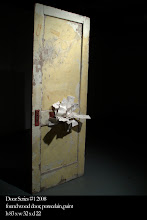By: Rob Barnard
“Everything made not is either a replica or variant of something made a little time ago and so on back without break to the first morning of human time.” George Kubler
The problems facing contemporary ceramic art are the same problems that face contemporary art in general. There is one difference though and that is that contemporary fine art, regardless of its problems holds the predominant position among all the visual arts in Western culture. That is to say it is the most celebrated-it is collected by more people, commands higher prices and has more institutions devoted to reinforcing its role in culture. While ceramic art has history that is every bit as rich and has played just as important a role in the world’s cultures as painting and sculpture, modern ceramic art is not taken as seriously by contemporary culture as painting and sculpture. The desire by modern ceramics to be seen as an art form that is just as significant as painting and sculpture has been its driving goal since the end of the Second World War. Modern ceramic art wants, in other words, what fine arts has. There is, however, some confusion and tension within the field between, on the one hand, the goal of being accepted into fine arts as a separate but equal partner, and on the other the desire to hold on to the iconography of its history while still making work that speaks to what it means to be human in the twenty-first century. One of the major issues that define the debates in the ceramics field as to what type of ceramic expression is the most relevant in modern culture can be traced to a larger cultural issue. And that is the idea of the new. Part of the problem for both the fine arts and the ceramic arts is that the idea of the new presupposes that “progress” is linear-new styles and approaches eclipse previous ones until they themselves are replaced. This perception leaves room for only one type of ceramic art occupying a predominant position in culture at any given moment.
Human beings are fixated with the idea of the “new.” The idea of “newness” as a marketing tool runs across cultures. We are told we can find happiness in new relationships, and new environments. Inherent in the idea of the “new” is an escape from our present predicament to one that is more pleasurable and more secure. The United States is a country that was built on this premise. There is of course, a reason that this idea is powerful. It is at the core of out evolution as a species and is what gives human beings not only hope for their future, but also hope for the future of their offspring as well. So, what about the idea of the “new” – when it comes to ceramic art, how do we measure “newness”, what are its qualities? Is it a worthwhile pursuit even?
Tuesday, August 19, 2008
Subscribe to:
Post Comments (Atom)

No comments:
Post a Comment